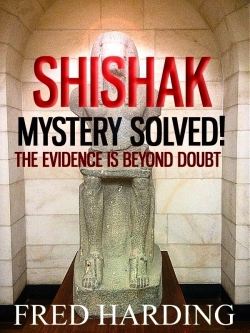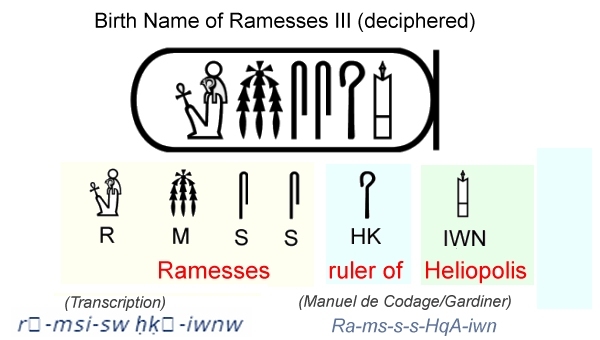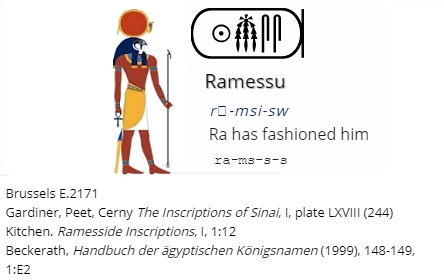SAMPLE READ

BUY AT AMAZON



USEFUL LINKS
Centuries of Darkness
(Peter James)
The Levantine War-Records of Ramesses IIIs
(Peter James)
The Name Shishaq: Shoshenq or Shyshu/q?
(Pieter Gert van der Veen)
When did Shoshenq I Campaign in Palestine?
(Peter James and Pieter Gert van der Veen)
'He Placed His Name in Jerusalem': Ramesside Finds from Judah's Capital
(Peter James, Pieter Gert van der Veen, with D.Ellis)
SHISHAK MYSTERY SOLVED

King Shishak of Egypt marched against Jerusalem." (1 Kings 14:25)
Nearly all Egyptologists identify Shishak with Shoshenq I of the 22nd dynasty (943 BC -716 BC) and this is still the majority position. However, it is a position which is based on old-school chronology that stems way back to 1828 when Jean-François Champollion (1790-1832) identified the person called Shishak in the Bible as the pharaoh known to history as Shoshenq I. As the two names sounded similar, 'Shishak' was identified by Champollion as Pharaoh Shoshenq I.
Shoshenq's identification was also based on Champollion's interpretation of reliefs he viewed on a wall of the Bubastite Portal at Karnak in that year. If you recall, it was Champollion, who only six years before, succeeded in deciphering the hieroglyphs on the Rossetta Stone in 1822.
When Champollion travelled to Egypt, the only time he did so, he visited the temple complex at Karnak which consists of a vast mix of decayed temples, chapels, pylons, and other buildings near Luxor, in Egypt. However, it was the scenes inscribed on the walls of the Bubastite Portal in hieroglyphs which captured Champollion's attention.
Among the 150 hieroglyphic name-rings on the Bubastite Portal, each represented as a bound and tethered Asiatic captive and representing the names of the towns conquered by Sheshonq during his northern campaign, one of them caught Champollion's eye. This was name ring 29. To him it appeared to say, "Ioudahamalek", which Champollion interpreted to mean "Judah the Kingdom". As far as Champollion was concerned, what other proof was needed. Here it was in black and white, so to speak, that Shoshenq I had fought against Judah and therefore must have captured Jerusalem. The identity that Shoshenq and Shishak of the Bible had therefore been confirmed in the most satisfactory manner."
From henceforth, anybody who was anybody in Egyptology agreed with Champollion, that is until William Max-Muller (1862-1919) who was one of the last students of the famous Egyptologist Georg Ebers (1837-1898), took a closer look. In 1888 Max-Muller pointed out that ring 29 should be read as "Yad-ha-Melek" which, when translated, means "Hand of the King." Suddenly, the "proof" that Judah was listed on the Bubastite Portal had become untenable. Yet despite this error, which modern scholars like Peter James, David Rohl and Kevin A. Wilson have made known through their books, the status quo that Shoshenq I and Shishak are one and the same has been maintained to the present day.
So who was Shishak? The answer to this mystery is not as difficult as it appears to be. I can say this with self-assurance because if one simply looks for the clues that are in plain sight in the Biblical text and put them together, the solution becomes inescapable. Nobody, as far as I am aware has used the methodology presented herein, at least not in the way I am about to show you. I therefore would like to invite you to join me in solving this mystery by using a methodology hitherto not tried before and one which truly identifies who Shishak was, and I can tell you without a shadow of doubt, he was not Shoshenq I. He was RAMESSES III
WHY WAS THE NAME SHISHAK USED AND NOT RAMESSES IN THE BIBLE?
It was after I wrote my book "Shishak Mystery Solved" that it occurred to me that there was another mystery embedded within its pages which I had not addressed. Why did God tell the Hebrew Scribes writing the Hebrew Scriptures in his name to refer to the king of Egypt as Shishak and not by the Egyptian king's Birth Name, Ramesses? We read for example at 2 Chronicles 12:7.
When YHWH saw that they humbled themselves, this word of the YHWH came to Shemaiah: "Since they have humbled themselves, I will not destroy them but will soon give them deliverance. My wrath will not be poured out on Jerusalem through Shishak.
When the Birth Name of Ramesses III is written in Egyptian Hieroglyphs it reads:
R M S S HK IWN

Actually, the mystery is not as difficult as one might have thought. Look at the name of Ramesses again. It begins with the name of the Egyptian god Ra. According to various sources, the god Ra was believed to rule in all parts of the created world: the sky, the Earth, and the underworld. He was also the god of the sun, order, kings, and the sky and was portrayed as a falcon. The name of Ramesses means "Ra has fashioned him"

I am sure you are quite aware that calling upon any other God other than YHWH is forbidden on the people of Israel, chosen out of all the nations to represent Him. (Exodus 20:3; Deuteronomy 7:6) Hence, it would be blasphemous to refer to Ramesses by his name because by doing so would mean that the god Ra was being recognized as his creator. So what the Hebrew scribes did was to remove the "R M" in his Birth name thereby leaving the Egyptian kings name as:
S S HK IWN
S S HK - SH(I)SH(A)HK
Hence, when translated into English "S S HK" becomes "SHISHAK" The Mystery is solved!